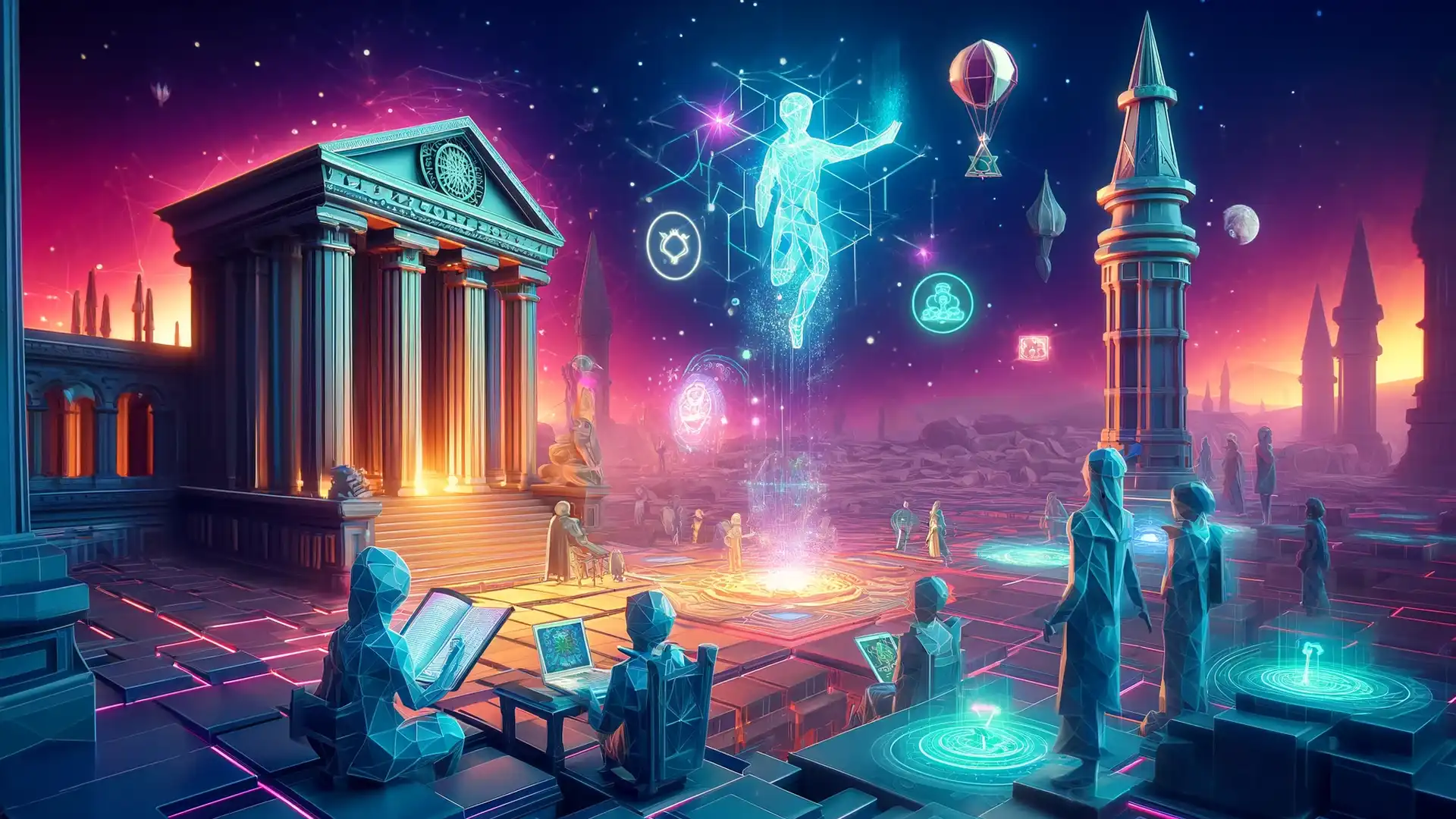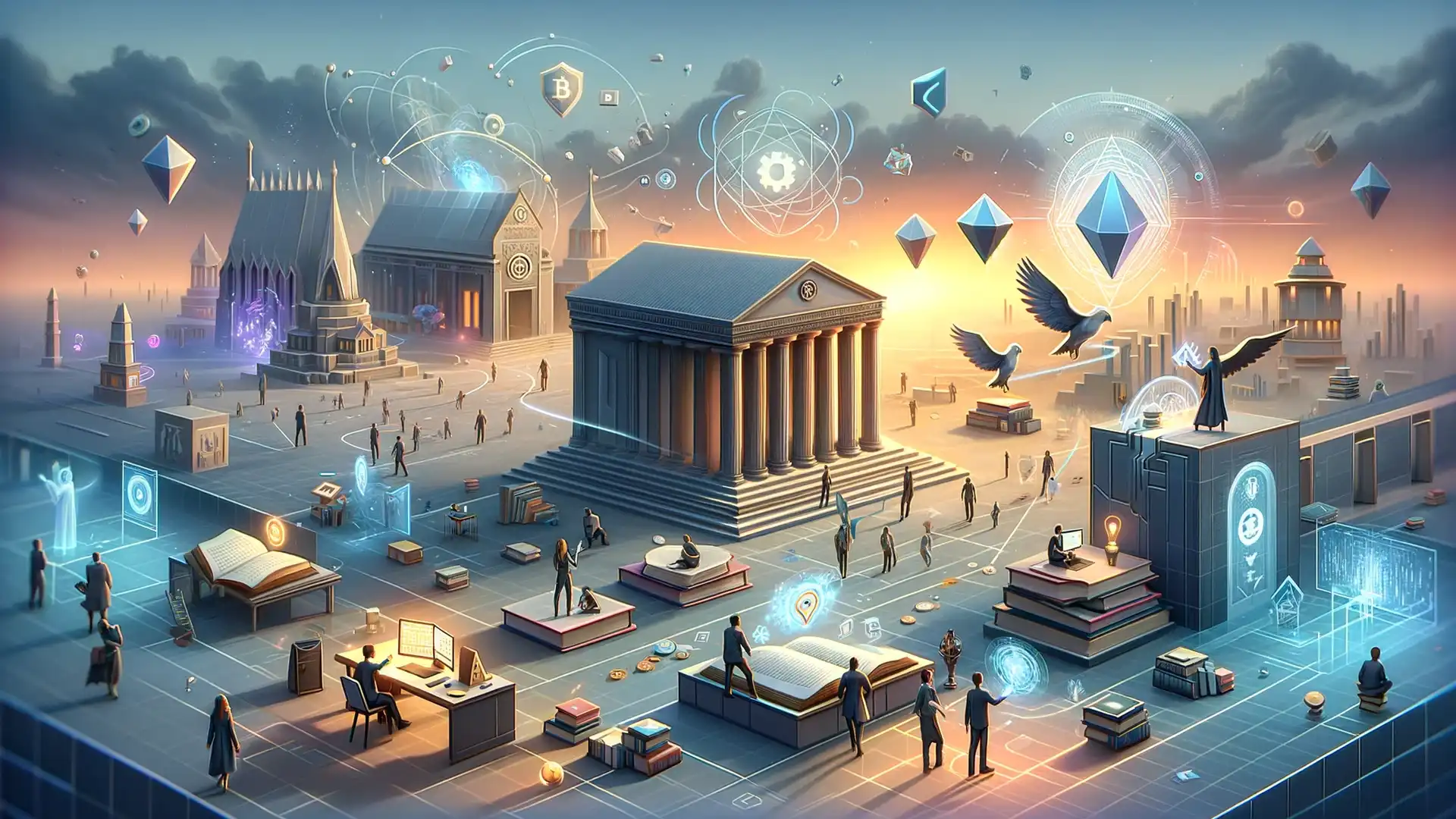The Power of NFT Rewards: Boosting Engagement and Loyalty in Education

 Author:
Artem Grigoriev
Author:
Artem Grigoriev
NFT Rewards as Innovative Learning Tools: Engaging and Motivating Students
In the evolving landscape of education, NFTs—Non-Fungible Tokens—emerge as novel and effective tools . They significantly enhance student engagement and motivation. These unique digital assets are verified using blockchain technology, a robust type of digital ledger that ensures the authenticity and ownership of these assets. This chapter explores the transformative role of NFTs as personalized learning enhancers and innovative digital rewards systems, highlighting their potential to revolutionize educational environments .
📘 This article complements: "The Complete Guide to NFT Credentials". Explore it to find answers to all your questions;)
The discussion begins by examining case studies where NFTs have been seamlessly integrated into educational curricula. These case studies demonstrate how NFTs make learning more interactive, immersive, and enjoyable through strategic gamification tactics. These tactics involve incorporating game-like elements into learning activities, effectively blending educational goals with the appeal of digital collectibility.
For instance, NFTs can represent unique achievements and serve as digital badges or certificates that students can proudly display in their digital portfolios. This tangible recognition of achievement not only boosts enthusiasm but also fosters a healthy competitive spirit among students. Initiatives like the University of Pennsylvania's digital badge program employ blockchain to manage credentials, showing promising results in enhancing student engagement and motivation. These engagement strategies capitalize on students’ inherent desire for achievement and recognition, linking their efforts to a visual and valuable outcome in the digital realm.
The psychological impact of such rewards is profound. Owning a rare and unique digital asset can significantly enhance a student's dedication to learning tasks. This chapter delves into research that highlights the motivational boost provided by the ownership and rarity of NFTs, contributing to increased educational engagement and perseverance.
Insights from psychological studies, such as those published in the Journal of Educational Psychology , affirm the effectiveness of digital rewards in education. They demonstrate their positive impact on student motivation and overall achievement. By leveraging the psychological appeal of rarity and ownership, educators can amplify student commitment and boost their eagerness to excel in their studies.
On a practical level, this chapter equips educators with a detailed guide to incorporating NFT technology into existing educational platforms. It covers the selection of appropriate blockchain technology to meet the institution's privacy and security standards and explains how to use smart contracts —self-executing contracts with the terms directly written into code. It also covers setting up a digital wallet system for managing these contracts.
💡 Note: Integrating NFTs into educational systems requires careful consideration of both technological infrastructure and educational goals. This ensures that these digital tools enhance rather than complicate the learning process.

The guidance draws on best practices recommended by leaders in blockchain education, stressing the need for secure and scalable solutions for educational institutions. Implementing these technologies requires careful planning and expertise to ensure they integrate smoothly into the educational curriculum.
Best practices for educators are highlighted, focusing on aligning NFT rewards with educational goals to effectively enhance learning outcomes. The chapter also identifies potential challenges in adopting this technology, such as ensuring equitable access for all students and addressing privacy concerns. It provides strategies to smoothly overcome these challenges.
Successful examples, like those in Harvard’s Innovation Labs , demonstrate adaptive approaches to technology integration in educational settings. These practices are critical for ensuring that the integration of NFTs into educational systems is conducted thoughtfully and inclusively.
Looking ahead, the chapter explores emerging trends, including the potential for NFTs to facilitate interoperable learning records across various institutions. It enables more personalized learning pathways, allowing for greater customization and flexibility in education, following patterns seen in sectors like digital healthcare where customization and flexibility are increasingly valued. Adapting these trends could provide educators with tools that support highly individualized educational experiences, fostering deeper engagement and more effective learning.
The closing section prepares educators and educational administrators to make informed decisions about adopting NFT technology. By embracing these digital tools, they can create an engaging, motivating, and rewarding learning environment tailored to the needs and interests of today's digital-native students.
💡 Tip: Stay informed about the latest developments in blockchain technology and educational applications of NFTs. Continuously refining and enhancing these tools in your educational strategies is crucial.

Building Loyalty and Long-Term Engagement: The Strategic Use of NFT Rewards in Education
In the quest to foster deeper engagement and loyalty among students, the strategic use of NFTs—Non-Fungible Tokens—in educational settings is rapidly gaining traction. NFTs are unique digital tokens that can represent ownership of specific items. They are verified using blockchain technology, a robust type of digital ledger system that ensures the authenticity and ownership of digital items. NFTs are ideal for tracking and rewarding student achievements in a unique and secure way. This chapter delves into various methods that educators can employ to integrate NFT rewards into learning environments, significantly enhancing both student engagement and educational outcomes.
The exploration begins with innovative strategies to incorporate NFTs into the educational framework. One effective approach is the creation of a tiered reward system, where students earn NFTs for reaching specific academic milestones. This method not only motivates students but also instills a sense of progression and achievement within them. Another strategy involves using NFTs to unlock advanced learning materials, enabling students to access new levels of the curriculum as they progress. Additionally, allowing students to trade NFTs introduces a dynamic layer to the learning experience, enabling them to tailor their educational pathways according to their interests and needs.
Insights from educational technology research provide empirical support, affirming the efficacy of gamification and personalized learning paths in enhancing educational outcomes. This support underscores the importance of NFTs in creating a more engaging, responsive educational environment that adapts to individual learning styles and goals.
The chapter also addresses the challenges inherent in adopting such technologies, with key issues such as data security and student privacy thoroughly examined. To manage these concerns, the chapter recommends choosing blockchain platforms that adhere to stringent data protection standards and suggests setting up clear, transparent systems that allow for parental and student oversight of personal data. Standards set by the Global Blockchain Business Council provide guidelines to maintain security and privacy within blockchain applications in education. This approach ensures that NFTs are implemented in a way that respects and protects the personal information of all participants.
💡 Note: The adaptability of NFTs allows for diverse applications in education, ranging from simple reward mechanisms to complex systems that enhance student autonomy and curriculum interaction.

To ground these strategies in reality, the narrative shifts to a review of empirical evidence from case studies and research highlighting the positive impacts of NFT rewards. Real-world examples and data points demonstrate significant benefits, including heightened motivation, improved academic performance, and increased retention rates. Notably, studies published by the International Society for Technology in Education reveal the transformative potential of integrating technology like NFTs in educational settings, showing improvements in student engagement and learning efficacy. These findings provide concrete evidence that NFTs can play a critical role in modernizing education and making it more relevant and appealing to students.
Looking to the future, the chapter speculates on emerging trends in the use of NFTs within educational systems. It envisions a shift towards more personalized education models where NFTs not only serve as proof of achievement but also as key components in a globally interoperable credential system. It also discusses the growing necessity for digital literacy within educational curricula to prepare students for a future where digital transactions and interactions are commonplace.
Insights from the Forbes Education Council stress the importance of integrating digital literacy, essential for ensuring that students are not only consumers but also competent navigators and creators within the digital landscape. This preparation is crucial, ensuring that students are competent navigators and creators within the digital landscape.
In conclusion, this chapter synthesizes these discussions into practical, actionable strategies for educators. It emphasizes the need to align NFT initiatives with broader educational objectives to maximize their impact, ensuring they contribute meaningfully to the educational experience. This strategic integration is crucial for ensuring that NFTs serve as more than just novel technology; they become fundamental elements that enhance engagement, foster loyalty, and drive educational success.
💡 Tip: Regular evaluation and adaptation of NFT-based programs are essential. Keeping pace with technological advances and shifting educational needs will help maintain the relevance and efficacy of NFT rewards in engaging students.

What Is TTP (Trusted Third Party) and Why It's Essential for NFT Credential Verification
NFT and Blockchain in Education: How are they used and why?
Technical Requirements and Specifications for Creating, Issuing, and Implementing NFT Credentials in Education
Integrating NFTs into Educational Platforms and LMS Systems
How to Verify the Authenticity of an NFT Credential and Identify the Owner
